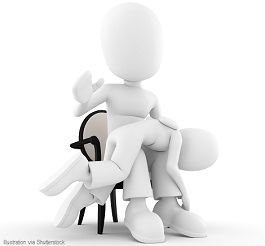|

The Damage Spanking Does (Including Creating Bullies)
By Wendy Priesnitz
“If we really want a peaceful and compassionate world, we need to build communities of trust where all children are respected.” ~ Desmond M. Tutu, Archbishop Emeritus, Global Initiative to End All Corporal Punishment of Children, 2006
If you hit your child, you give them a message that it’s okay to hit others. And when kids hit others, we call it bullying.
A study published in 2010 in the journal Pediatrics examining the case histories of almost two thousand five hundred American children confirms that spanking breeds bullies. The study used respondents to the Fragile Families and Child Well-being Study, conducted in twenty U.S. cities between 1998 and 2005.
Lead author Dr. Catherine Taylor of Tulane University and her team factored out the influences such as maternal mental health and use of drugs, domestic violence, neglect, income, age, race, and education. And spanking emerged as the most important factor in determining which three-year-old children developed into aggressive five-year-olds.
More than half of the three-year-olds spanked more than twice in the previous month by their mothers turned into aggressive five-year-olds, even when accounting for the child’s level of “natural” aggression at age three. Forty percent of the kids spanked only once or twice in the previous month turned into bullies by age five.
Previous studies have connected spanking and aggression in children, although this was the first and one of the largest and demonstrates just how powerful the link is. In 2002, psychologist Elizabeth Thompson Gershoff of Columbia University’s National Center for Children in Poverty analyzed 62 years of data and found spanking leads not only to childhood aggression but other antisocial behaviors such as lying and cheating, and other types of misbehaviors behind their parent’s backs.
A University of Michigan study published in the journal Developmental Psychologyfound that a mother's affection after she spanks her child does little to diminish the negative impact of the act. More than three thousand white, African American, and Hispanic families in major cities participated in the study. Data was collected when children were ages one, three and five. Mothers disclosed how often spanking occurred and reported children's aggressive behavior and their own warmth toward their children.
"There is a common belief that spanking that occurs in a positive parent-child relationship will not be harmful to children," says Shawna Lee, an assistant professor at the U-M School of Social Work. "We were able to test that belief in this study. Spanking predicted worse, not better, child behavior over time, regardless of how warm mothers were with their children." Despite the studies indicating that spanking increases child aggression, parents still continue to use physical punishment at high rates in hopes to see positive behavior, she adds.
Unfortunately, spanking is still legal in many countries, including both Canada and the U.S., and most parents, when surveyed, say they approve of and have used spanking as a form of child discipline. In fact, according to the American Academy of Pediatrics, spanking happens at least once a week in twenty-five percent of two-parent, middleclass families. Twenty-four countries ban spanking, including Sweden, New Zealand, and Spain.
Learn More
Conscious Parenting Without Discipline, an interview with Dr. Shefali Tsabary in Natural Child Magazine, May/June 2014
Unconditional Parenting: Moving from Rewards and Punishment to Love and Reason by Alfie Kohn (Artria Books, 2005)
For Your Own Good: Hidden cruelty in child-rearing and the roots of violence by Alice Miller (Farrar, Straus and Giroux, 1990)
The Body Never Lies: The Lingering Effects of Cruel Parenting by Alice Miller (W.W. Norton, 2006)
Wendy Priesnitz is the editor of Natural Child Magazine, has been a journalist for over forty years, and has authored thirteen books and contributed to many more.
|

